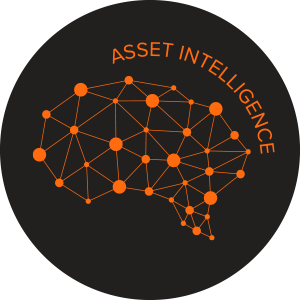Generating Value in Public Health for NSW
Executive Summary
Ageing infrastructure, complex operating environments and shifting demographics, combined with constrained funding, all represent Asset Management and planning challenges for health administrators.
Approximately 40% of NSW Health’s built infrastructure is over 50 years old, which necessitates ongoing investment in maintenance and upgrades to meet current needs. It is not always feasible to build new assets, so optimising existing assets by minimising down-time increases performance and mitigates risk for healthcare workers and patients alike.
To get better insight and develop more effective strategies, many organisations are turning to Asset Intelligence. Combining data and technology to generate Asset Intelligence enables evidence-based decision-making to balance cost, risk and performance to determine the prioritisation of investment.
In October 2019, the Asset Management Policy for the NSW Public Sector (AM Policy) was released and published. There are core requirements from NSW Health and each Local Health District that need to be met, including Strategic Asset Management Plans (SAMPs) and Asset Management Plans (AMPs) that require information about assets, their condition and expected costs to maintain fit-for-purpose. This paper looks at the specific challenges and opportunities for NSW Health Facilities, and examines how Asset Intelligence can help address them.
Summary of Requirements & AssetFuture Capability
| Asset Management Policy Requirement | AssetFuture Capability |
|---|---|
| Asset Management Principles: Using a whole-of-life costing approach, cost, risk and performance are measured and reported. |
Using scenario-planning, and based on your maintenance strategy, you can measure and report on cost, risk and performance, including Facilities Condition Index for part or all of your portfolio.Generate cost projections for your maintenance strategy 5 or 10+ years into the future. |
| Asset Management Framework: Developing SAMPs and AMPs documenting all lifecycle activities. Creating and maintaining an Asset Register. |
Using scenario-planning, and based on your maintenance strategy, you can measure and report on cost, risk and performance, including Facilities Condition Index for part or all of your portfolio.Generate cost projections for your maintenance strategy 5 or 10+ years into the future. |
| Policy Compliance and Disclosures: The implementation of procedures to manage asset information, and that asset management maturity is progressing. |
AssetFuture’s reporting functionality supports procedures to manage asset information, and comply with all audit requirements.Data integrity can be maintained through mobile applications for self-management of defects, issues or capital works. |
Challenges and opportunities for NSW Health Facilities
Approximately 40% of NSW Health’s built infrastructure is over 50 years old, which necessitates ongoing investment in maintenance and upgrades to meet current needs.
An ongoing maintenance backlog will erode quality and reliability of many assets, and bring higher costs for future asset maintenance and renewal.
It is not always feasible to build new assets, so optimising existing assets by minimising down-time increases performance and mitigates risk for healthcare workers and patients alike.
Australia wide, there has historically been an underspend on preventative maintenance. A lack of data and inadequate reporting have contributed to a maintenance funding backlog across all infrastructure sectors. During 2017-18, NSW Health found that maintenance expenses made up 2.8% ($621 million) of total expenses, and maintenance backlogs and high levels of unplanned maintenance occurred.
The NSW Government has recognised that the biggest challenges and opportunities for Health NSW include:
A growing and ageing population
The increasing cost of healthcare
A complex operating environment
Ageing health infrastructure
Technology and disruption
Improving the approach to asset planning and delivery
Asset Management manages the life cycle of assets and combines not only cost, risk and performance, but financial and business value. Aligning use and condition to clinical needs is a critical approach to tracking and analysis of maintenance expenditure.
The NSW Government’s State Infrastructure Strategy 2018-2038 highlights a key strategic objective as asset management reform to optimise the management, performance and use of assets. Asset life cycle costs underpins this approach, generating performance, risk and economic modelling for the strategy.
In October 2019, the Asset Management Policy for the NSW Public Sector (AM Policy) was released and published. There are core requirements from NSW Health and each Local Health District that need to be met, including Strategic Asset Management Plans (SAMPs) and Asset Management Plans (AMPs) that require information about assets, their condition and expected costs to maintain fit-for-purpose.
Delivering better outcomes through effective Asset Management
Your requirements for NSW Government’s Asset Management Policy
Key Requirements of the Asset Management Policy:
1. Asset Management Principles
Using a whole-of-life costing approach, cost, risk and performance are measured and reported.
2. Asset Management Framework
Developing SAMPs and AMPs documenting all lifecycle activities. Creating and maintaining an Asset Register.
3. Policy Compliance & Disclosures
The implementation of procedures to manage asset information, and that asset management maturity is progressing.
Building your Capabilities for the Future
Creating SAMPs for your facility may seem like a daunting prospect. There are high degrees of complexity and accountability - especially as we are managing expensive assets, with multiple layers of additional infrastructure to support medical specific procedures and practices.
There are trade-offs between cost, budget and outcomes that are inherently more complex than traditional commercial buildings and asset portfolios. There are major considerations for risk mitigation and management.
How AssetFuture can help with your Asset Management Policy Requirements
AssetFuture is a cloud-based Asset Intelligence tool that provides a highly data-driven means of forecasting operating and capital funding required to maintain health facilities and equipment to a predetermined condition and risk level.
Asset Intelligence is the merging of data and technology to give you a clear line-of-sight for the life cycle of your assets, balancing condition and risk in an environment where funding is constrained. This is especially important to health care providers struggling for sufficient funding to suit their needs and minimise the cost of maintaining facilities. This enables the ability for each organisation to continue to provide adequate services to the community.
Asset Intelligence
Using powerful predictive modelling, Asset Intelligence provides you with insight to forecast cost and manage risks accurately, model scenarios and enable evidence-based decision making through lifecycle.
Asset Intelligence drives your facility’s asset strategy that is aligned with business drivers, ensuring a complete line-of-sight from executive management through to operational delivery. This information feeds directly into your AMP and your SAMP.
Asset Register
Asset Intelligence drives your facility’s asset strategy that is aligned with business drivers, ensuring a complete line-of-sight from executive management through to operational delivery. This information feeds directly into your AMP and your SAMP.
At the core of the AssetFuture Platform is a comprehensive Asset Register containing:
A unique identifier for each asset in the portfolio
A location identifier within the asset hierarchy as well as a geographical reference
The current condition of each asset
The criticality of each asset to achievement of the organisation’s objectives
Levels of service required for each asset based on its criticality
Activities required to maintain the asset over its lifecycle including to the determined level of service
The future financial, risk and condition implication of each of these activities.
Asset Management Plan
The AssetFuture Platform is used as a primary input source to the Asset Management Plan required by Government asset management frameworks. These Asset Management Plans optimise asset related outcomes based on stakeholder expectations and a given funding level by prioritising investment where it is most needed. This maximises patient outcomes as well as satisfaction levels with services provided.
Asset Information Management
AssetFuture also works with organisations to maximise the benefits associated with using the platform. This can include carrying out an Asset Information Management Maturity Assessment in order to identify process improvements to the way asset information is managed across the business. AssetFuture can then work with the organisation to develop an Asset Information Strategy which is essentially a road map of prioritised activities to carry out improvements identified during the assessment.
Case Studies
Monash Health
One of Monash Health’s primary assets is Moorabbin Hospital, Home of the Monash Cancer Centre. With a mature approach to data, and an up-to-date Asset Register, Moorabbin needed to ascertain any gaps in the data to ensure information was accurate, timely and relevant.
Results:
Data collection and validation completed incredibly fast and Monash Health has the right data to establish condition and associated costs for the future, giving a holistic view of the whole site. Additionally, AssetFuture’s visualisation tools has meant the team can communicate the value of Asset Intelligence to their wider teams easily.
NSW Department of Education
AssetFuture helped deploy best practice technologies to undertake Life Cycle Costing (LCC) assessments, define current and future maintenance liability, and review functional fit-for-purpose. The result were used to identify budget requirements as well as prioritise investment.
Results:
The Department of Education has improved its ability to project current and future funding needs to prioritise investment decisions.
Using AssetFuture, a backlog of $449M was identified which increased the Treasury investment to nearly $1.3B.
In addition, the Department of Education and AssetFuture were finalists in the 2019 Prime Minister’s Award.






